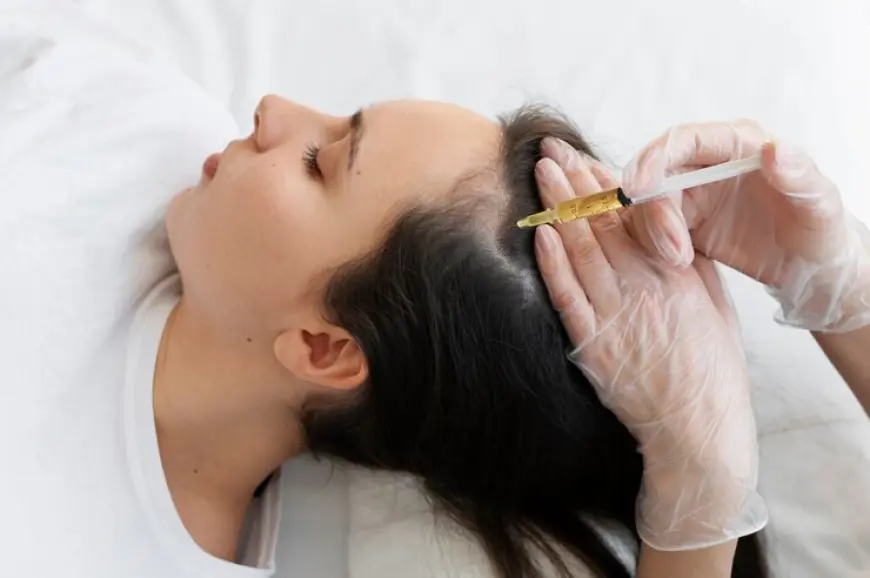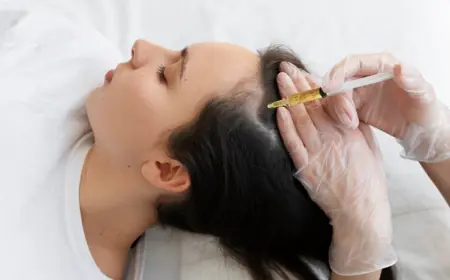Hair Plasma and Lifestyle Changes: What You Should Know
The treatment has gained popularity due to its natural, safe, and effective approach. However, incorporating the right lifestyle changes can amplify its results.

The effectiveness of Hair Plasma therapy extends beyond the treatment itself. While this innovative solution offers exceptional results for hair restoration, combining it with positive lifestyle changes can significantly enhance its outcomes. This blog explores the synergy between Hair Plasma treatments and lifestyle choices, offering insights into how you can maximize the benefits and achieve optimal hair health.
1. Understanding Hair Plasma Therapy
Hair Plasma بلازما الشعر , also known as Platelet-Rich Plasma (PRP) therapy, is a non-surgical procedure that uses your blood's natural growth factors to stimulate hair follicles, promote regrowth, and improve hair quality. The treatment has gained popularity due to its natural, safe, and effective approach. However, incorporating the right lifestyle changes can amplify its results.

2. Why Lifestyle Matters in Hair Restoration
While Hair Plasma therapy addresses the biological and structural aspects of hair loss, your lifestyle plays a crucial role in maintaining overall hair health. Factors such as nutrition, stress levels, sleep patterns, and environmental exposure directly influence the success of the treatment.
3. Key Lifestyle Changes to Support Hair Plasma Therapy
a. Nutritional Improvements
A well-balanced diet rich in essential nutrients is vital for hair health. After undergoing Hair Plasma therapy, ensure you’re consuming:
- Protein: Builds keratin, a crucial component of hair structure.
- Iron: Prevents anemia-related hair thinning.
- Zinc and Biotin: Strengthen hair strands and promote growth.
- Vitamins D and E: Enhance scalp health and protect hair follicles.
Consider consulting a nutritionist to develop a tailored meal plan that supports your hair restoration goals.
b. Stress Management
Stress is a significant contributor to hair loss, as it disrupts hair growth cycles. Post-treatment, adopt stress-relief practices such as:
- Meditation and Yoga: Enhance mental well-being and reduce stress.
- Regular Exercise: Boosts blood circulation, ensuring adequate nutrient delivery to the scalp.
- Adequate Rest: Aim for 7–9 hours of quality sleep per night to promote healing and growth.
c. Scalp Care Routine
Maintaining a clean, healthy scalp is essential for the success of Hair Plasma therapy. Incorporate the following into your routine:
- Use gentle, sulfate-free shampoos.
- Avoid excessive heat styling and harsh chemicals.
- Massage your scalp daily to improve circulation and stimulate follicles.
d. Avoiding Harmful Habits
Certain habits can negate the benefits of Hair Plasma therapy. Avoid:
- Smoking: Reduces blood flow to the scalp and hampers follicle regeneration.
- Excessive Alcohol Consumption: Interferes with nutrient absorption and affects overall hair health.
- Overuse of Hair Products: Can clog follicles and lead to scalp issues.
4. The Role of Hydration
Staying hydrated is often overlooked in hair restoration journeys. Water helps maintain scalp health, supports nutrient delivery, and ensures hair strands remain strong and elastic. Aim to drink at least 8 glasses of water daily, especially after undergoing Hair Plasma therapy.
5. Environmental Factors and Protection
Environmental exposure can impact the efficacy of Hair Plasma treatments. Protect your hair and scalp by:
- Wearing hats or scarves in harsh sunlight.
- Using products with UV protection.
- Avoiding prolonged exposure to chlorine or saltwater.
6. Monitoring and Tracking Progress
Documenting your progress can motivate you to maintain a healthy lifestyle. Take photographs before and after each Hair Plasma session, and keep a journal of your diet, exercise, and hair care routine. Regular follow-ups with your practitioner can also help refine your treatment plan.
7. The Psychological Benefits of Lifestyle Changes
Adopting a healthier lifestyle not only supports Hair Plasma therapy but also boosts your confidence and self-esteem. The visible improvement in your hair, coupled with an overall sense of well-being, can make your journey toward hair restoration more rewarding.
8. Combining Hair Plasma with Lifestyle for Long-Term Success
The combination of Hair Plasma therapy and proactive lifestyle choices creates a powerful strategy for long-term hair restoration success. Patients who commit to a healthy lifestyle often report better results, sustained regrowth, and improved hair quality compared to those who rely solely on the treatment.
9. Setting Realistic Expectations
While Hair Plasma therapy and lifestyle changes can deliver remarkable results, it’s essential to set realistic expectations. Factors such as the severity of hair loss, genetic predisposition, and overall health influence the final outcome. Collaborate with your practitioner to develop a personalized plan tailored to your goals.
10. Conclusion: Maximizing Hair Plasma Benefits
The synergy between Hair Plasma therapy and a healthy lifestyle is undeniable. By nourishing your body with the right nutrients, managing stress, and adopting a consistent hair care routine, you can enhance the effectiveness of the treatment and achieve long-lasting results.
What's Your Reaction?
 Like
0
Like
0
 Dislike
0
Dislike
0
 Love
0
Love
0
 Funny
0
Funny
0
 Angry
0
Angry
0
 Sad
0
Sad
0
 Wow
0
Wow
0





















































